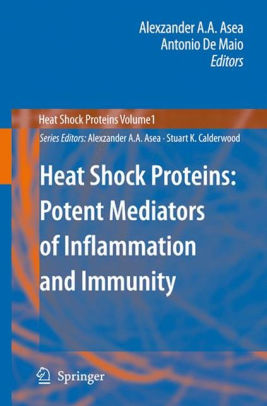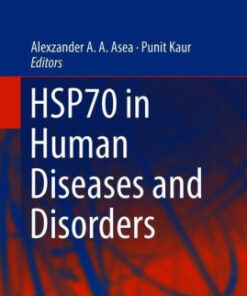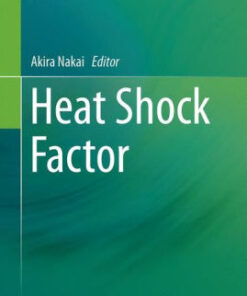(PDF) Heat Shock Proteins – Potent Mediators of Inflammation and Immunity by Alexzander A.A. Asea
$18.00
Download instantly Heat Shock Proteins – Potent Mediators of Inflammation and Immunity by Alexzander A.A. Asea, Antonio De Maio. It is ebook in PDF format.
ISBN-10: 9048174015 ISBN-13: 9789048174010
Preview
This is the PDF eBook version for Heat Shock Proteins – Potent Mediators of Inflammation and Immunity by Alexzander A.A. Asea, Antonio De Maio
Table of Contents
Mechanisms of Heat Shock Protein Release.- Release of Heat Shock Proteins: Passive Versus Active Release Mechanisms.- Hsp70 Peptide Acting as a Danger Signal for Natural Killer (NK) Cells.- Mechanisms of Stress-Induced Cellular Hsp72 Release.- Roles of Extracellular Heat Shock Proteins: A New Sense of Danger.- Heat Shock Protein Binding and Receptor-Mediated Signaling.- Macrophages and the Stress Response.- Heat Shock Proteins and Scavenger Receptors.- The Inside Story: Anti-Inflammatory roles of HSF1 and heat shock proteins.- Interaction of Heat Shock Protein 60 with Innate Immune Cells.- Immune Responses Elicited by Heat Shock Proteins.- HSP-APC Interactions: Initiation of Immune Responses.- Extracellular Functions for an Intracellular Protein: GRP94/GP96 Interactions with the Mammalian Immune System.- Hsp-Induced Stimulation of Immune Responses.- The Role of Heat Shock Proteins in the Elicitation of Immune Responses.- Hsp70 Family Members, Danger Signals and Autoimmunity.- The Immune Response Under Stress: Class I HLA Presentation of Host-Derived Peptides.- Extracellular Hsp 72: A Double-Edged Sword for Host Defense.- HSP60: A Pleiotropic Immune Signal.- Antigen Processing, Presentation and Effect on Inflammation and Disease.- Impact of HSP-Chaperoned Peptides on the MHC Class II-Dependent Presentation and Activation of CD4 T Cells in Regard of Allo- and Autoantigens.- Heat Shock Proteins are Targets for T Cell Regulation: How Microbial HSP Induce IL10 Producing Anti-Inflammatory T Cells.- The Pro- and Anti-Inflammatory Properties of the Stress Protein GP96.- Anti-Tumor Response and Heat Shock Proteins (HSP): A friend or Foe relationship?.- Heat Shock Proteins and the Resolution of Inflammation by Lymphocytes.




